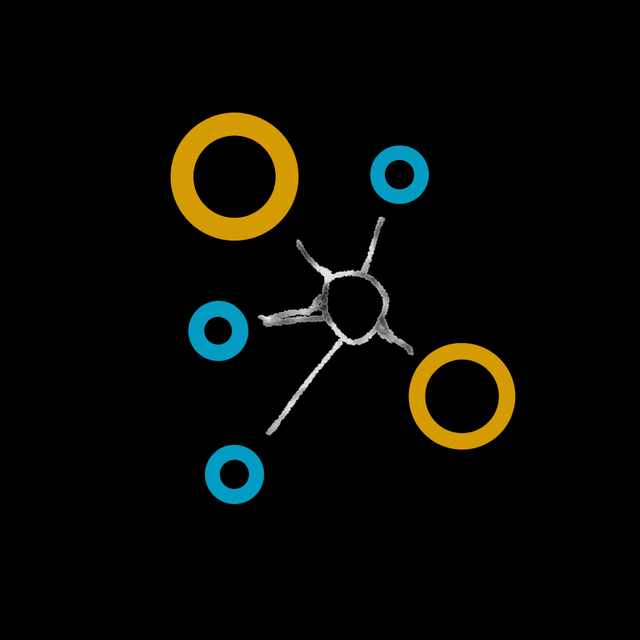EXPERT SYSTEM FOR DIAGNOSING BEHAVIORAL DISORDERS USING THE DEMPSTER-SHAFER THEORY ALGORITHM
##plugins.themes.academic_pro.article.main##
Abstract
Behavioral disorders, especially in children, can have a significant impact on their development in various domains, such as social, emotional, and academic. The diagnostic process for this disorder can be complicated due to overlapping symptoms and the possibility of complex causal factors. Early identification and appropriate treatment of behavioral disorders is essential to prevent more serious impacts on an individual's psychological well-being. Lack of knowledge and difficulty in accessing psychiatrists to find out about behavioral disorders in children are factors that result in this problem requiring a solution. The aim of this research is to create an expert system that utilizes the Dempster-Shafer Theory algorithm to detect behavioral disorders, thus simplifying the diagnosis process and ensuring accurate results. The Dempster-Shafer theory, as an inference engine, can overcome uncertainty by combining several sources of evidence or data that may overlap or be incomplete, resulting in a stronger conclusion. The main feature of this expert system is its ability to carry out diagnoses based on symptoms and display diagnosis results, disease descriptions, and treatment options. Test accuracy produces a value of 90%, which shows that the Dempster-Shafer Theory approach can diagnose behavioral disorders effectively.
##plugins.themes.academic_pro.article.details##

This work is licensed under a Creative Commons Attribution-NoDerivatives 4.0 International License.
References
- Y. Setiawati, Penanganan Gangguan Belajar, Emosi, dan Perilaku pada Anak dengan Attention Deficit Hyperactivity Disorder (ADHD). Malang: Airlangga University Press, 2020.
- N. L. G. K. Widiastuti, “Layanan Pendidikan Anak Berkebutuhan Khusus Dengan Gangguan Emosi dan Perilaku,” Indones. J. Educ. Res. Rev., vol. 3, no. 2, p. 1, 2020, doi: 10.23887/ijerr.v3i2.25067.
- S. Sujarwanto and K. Rofiah, Manajemen Pendidikan Anak Dengan Gangguan Emosi Perilaku. Surabaya: Jakad Media Publishing, 2020.
- U. Rahmah, T. Tursina, and H. Sastypratiwi, “Basis Pengetahuan untuk Gangguan Perilaku Anak dengan Model Keputusan Kelompok,” JEPIN (Jurnal Edukasi dan Penelit. Inform., vol. 7, no. 1, pp. 76–83, 2021.
- R. M. Nur and S. Arlis, “Sistem Pakar dalam Mengidentifikasi Penyakit Malnutrisi pada Balita Metode Forward Chaining,” J. KomtekInfo, vol. 9, no. 1, pp. 6–11, 2022, doi: 10.35134/komtekinfo.v9i1.197.
- F. Felix and L. W. Santoso, “Sistem Pakar Diagnosa Penyakit Sistem Saraf Pusat dengan Metode Backward Chaining dan Certainty Factor,” J. Infra, vol. 10, no. 1, pp. 142–148, 2022.
- S. S. Sundari, Y. H. Agustin, and H. Silmi, “Sistem Pakar Diagnosa Tingkat Retardasi Down Syndrome Pada Anak Menggunakan Metode Certainty Factor,” in Seminar Nasional Sistem Informasi dan Teknik Informatika (SENSITIF), 2019, pp. 289–300.
- S. Pulungan, M. Fakhriza, and A. M. Harahap, “Sistem Pakar Mendiagnosa Penyakit Kanker Nasofaring Sejak Dini Menggunakan Metode Dempster Shafer Berbasis Web,” J. Ilm. Sist. Inf. dan Ilmu Komput., vol. 3, no. 2, pp. 59–86, 2023, [Online]. Available: https://doi.org/10.55606/juisik.v3i2.486
- Y. Fernando, R. Napianto, and R. I. Borman, “Implementasi Algoritma Dempster-Shafer Theory Pada Sistem Pakar Diagnosa Penyakit Psikologis Gangguan Kontrol Impuls,” Insearch (Information Syst. Res. J., vol. 2, no. 2, pp. 46–54, 2022.
- I. Ahmad, Y. Rahmanto, R. I. Borman, F. Rossi, Y. Jusman, and A. D. Alexander, “Identification of Pineapple Disease Based on Image Using Neural Network Self-Organizing Map (SOM) Model,” in International Conference on Electronic and Electrical Engineering and Intelligent System (ICE3IS), 2022.
- S. I. Oguoma, K. K. Uka, C. A. Chukwu, and E. C. Nwaoha, “An Expert System for Diagnosis and Treatment of Mental Ailment,” OALib, vol. 07, no. 04, pp. 1–22, 2020, doi: 10.4236/oalib.1106166.
- R. I. Borman, R. Napianto, P. Nurlandari, and Z. Abidin, “Implementasi Certainty Factor Dalam Mengatasi Ketidakpastian Pada Sistem Pakar Diagnosa Penyakit Kuda Laut,” JURTEKSI (Jurnal Teknol. dan Sist. Informasi), vol. VII, no. 1, pp. 1–8, 2020.
- T. W. Harjanti, “Implementation of Inference Engine with Certainty Factor on Potential Diagnosis of Brain Tumor Disease,” PILAR Nusa Mandiri J. Comput. Inf. Syst., vol. 18, no. 1, pp. 25–30, 2022, doi: 10.33480/pilar.v18i1.xxxx.
- I. Susilawati and R. Y. Simanullang, “Sistem Pakar untuk Mengidentifikasi Penyakit ITP (Idiopathic Thrombocytopenic Purpura) melalui Pendekatan Dempster Shafer,” JIKTEKS J. Ilmu Komput. dan Teknol. Inf., vol. 1, no. 3, pp. 17–24, 2023.
- F. Okmayura and N. Effendi, “Design of Expert System for Early Identification for Suspect Bullying On Vocational Students by Using Dempster Shafer Theory,” CIRCUIT J. Ilm. Pendidik. Tek. Elektro, vol. 3, no. 1, pp. 48–61, 2019.
- I. D. Ananda, R. Kurniawan, N. Yanti, and F. Insani, “Sistem Pakar untuk Mendiagnosis Gangguan Tidur Menggunakan Metode Dempster Shafer,” JIMP J. Inform. Merdeka Pasuruan, vol. 6, no. 3, pp. 1–8, 2022.
- R. Napianto, Y. Rahmanto, R. I. Borman, O. Lestari, and N. Nugroho, “Dhempster-Shafer Implementation in Overcoming Uncertainty in the Inference Engine for Diagnosing Oral Cavity Cancer,” CSRID (Computer Sci. Res. Its Dev. Journal), vol. 13, no. 1, pp. 45–53, 2021.
- I. Ahmad, E. Suwarni, R. I. Borman, A. Asmawati, F. Rossi, and Y. Jusman, “Implementation of RESTful API Web Services Architecture in Takeaway Application Development,” in International Conference on Electronic and Electrical Engineering and Intelligent System (ICE3IS), 2022, pp. 132–137. doi: 10.1109/ICE3IS54102.2021.9649679.
- H. Mayatopani, R. I. Borman, W. T. Atmojo, and A. Arisantoso, “Classification of Vehicle Types Using Backpropagation Neural Networks with Metric and Ecentricity Parameters,” J. Ris. Inform., vol. 4, no. 1, pp. 65–70, 2021, doi: 10.34288/jri.v4i1.293.
- R. I. Borman, F. Rossi, D. Alamsyah, R. Nuraini, and Y. Jusman, “Classification of Medicinal Wild Plants Using Radial Basis Function Neural Network with Least Mean Square,” in International Conference on Electronic and Electrical Engineering and Intelligent System (ICE3IS), 2022.
Similar Articles
- Abdul Jalil, Rahmat Hidayat, SISTEM DETEKSI MUTU TELUR AYAM RAS MENGGUNAKAN SENSOR LDR (LIGHT DEPENDENT RESISTOR) BERBASIS ARDUINO UNO , TEKNOKOM: Vol. 7 No. 1 (2024): TEKNOKOM
You may also start an advanced similarity search for this article.


 https://ijeeemi.poltekkesdepkes-sby.ac.id/pages/pulsayuk/
https://ijeeemi.poltekkesdepkes-sby.ac.id/pages/pulsayuk/
